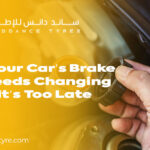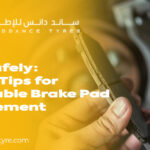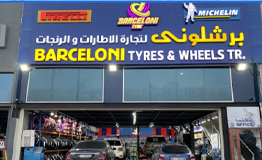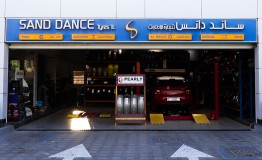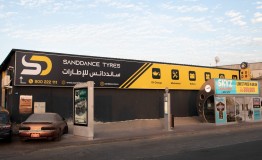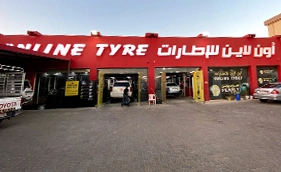Brakes are the single most critical safety system on your vehicle — and yet, brake pad wear is one of the most commonly postponed maintenance items. Timely Brake Pad Replacement keeps you and other road users safe, preserves expensive components (like rotors), and can even save money over time. This guide gives practical, affordable tips to help you know when to replace pads, how to choose the right parts and service, and ways to reduce long-term costs without compromising safety.
Know the warning signs (don’t wait)
You shouldn’t wait until brakes fail to act. Common signs you need new pads include a high-pitched squeal while braking (many pads have wear indicators that squeal), grinding noises (a dangerous sign that pads are worn to metal), increased stopping distance, a soft or spongy brake pedal, or a vibration when braking. Any of these symptoms deserve immediate inspection.
How frequently should pads be changed?
There’s no single mileage number that fits every car or driver. Typical ranges are 30,000–70,000 km depending on driving style, vehicle type, and pad material. Heavy city driving and frequent stop-and-go traffic wear pads faster than highway cruising. Regular inspections every 10,000–15,000 km will help you catch wear early and plan a budget-friendly replacement.
Choosing where to replace your pads
When selecting a provider, balance cost with reputation and warranty. Cheap, inexperienced services can save you money up front but cost more later in damaged rotors or poor workmanship. For high-quality, reliable work search for reviews and transparent pricing. If you’re in the UAE, consider options carefully — the best brake pad replacement service in uae will offer genuine parts, clear labor rates, and a visible inspection report so you know exactly what you’re paying for.
Types of brake pads and what to buy
Brake pads come in three main types: organic (softer, quieter, budget-friendly), semi-metallic (durable and good heat dissipation), and ceramic (long life, low dust, premium cost). For everyday driving, semi-metallic offers the best balance of cost and performance. Match the pad to your driving conditions — heavier vehicles or towing may benefit from higher-performance pads. Always choose pads that meet OEM or better standards; generic low-quality pads can feel fine at first but wear rotors faster.
What happens during a professional replacement
A professional Brake Pad Replacement typically includes: removing the wheel, inspecting calipers and rotors, removing old pads, measuring rotor thickness, installing new pads (and hardware if needed), and a road test. Many shops also clean and lubricate sliding components. For full vehicle safety, providers often recommend wheel alignment or balancing where needed — some workshops bundle Tyre Balancing Service Dubai, UAE with braking services to ensure smooth, vibration-free stops and even tire wear.
Cost-saving tips without cutting safety
- Shop for parts yourself (carefully): Ordering mid-range pads online and taking them to a trusted installer can save money. Make sure the part numbers match and the pads have good reviews.
- Replace in pairs or axles: Always replace pads on both sides of the same axle together — uneven pads cause pull and uneven rotor wear.
- Inspect rotors before grinding or replacing: Resurfacing rotors can be cheaper than replacement if thickness and condition allow.
- Look for package deals: Some shops offer combined services (pads + rotors + balancing) at a discount.
- Use reputable mechanics: A slightly higher labor charge from an experienced shop avoids costly follow-ups.
DIY vs professional replacement — what to consider
If you have the tools and mechanical confidence, replacing front pads can be a doable weekend job for many drivers. You’ll need a jack, stands, basic sockets, a C-clamp (or piston tool), and torque wrench. However, leave complicated jobs (seized calipers, electronic parking brakes, regeneration systems on hybrids) to professionals. Remember: improper installation is a safety hazard.
Brake bedding and break-in procedure
New pads often require a bedding procedure to transfer a thin layer of pad material to the rotor. This improves bite and reduces noise. A typical bedding routine is multiple moderate stops from 40–60 km/h without coming to a full stop, followed by cool-down. Follow the pad manufacturer’s specific instructions when available.
Maintenance habits that extend pad life
- Avoid heavy, late braking; anticipate stops and coast when possible.
- Reduce vehicle weight when practical.
- Limit aggressive towing or carrying unnecessarily heavy loads.
- Keep brake fluid fresh per manufacturer intervals — old fluid affects hydraulic performance.
- Regularly inspect calipers and sliding pins; stuck components cause uneven wear.
Tyres, fuel economy and braking performance
Brake performance and tyres are linked: better tyre grip shortens stopping distances and reduces brake load. When discussing upgrades, it’s useful to read related posts like Fuel Efficient Tyres by Sanddanc to understand how tyre choice affects both braking and economy. Choosing tires with good wet-grip ratings and correct inflation improves safety and reduces braking strain.
Warranty, documentation and post-service checks
Always get a printed invoice detailing parts and labor, and ask about warranty terms for both pads and workmanship. After service, listen for unusual noises and monitor pedal feel for the next several days — return immediately if anything seems off.
Conclusion — stop safely and smartly
Affordable Brake Pad Replacement is about making informed choices: recognize warning signs early, choose quality parts matched to your driving, pick a reputable installer, and practice maintenance habits that reduce wear. Safety should never be sacrificed for a small upfront saving — but with the right approach you can keep costs reasonable while ensuring reliable stopping power. If you plan service soon, compare quotes, read recent reviews, and prioritize shops that provide inspections and clear warranties.
Frequently Asked Questions (FAQs) About Brake Pad Replacement
1. How do I know when it’s time for Brake Pad Replacement?
Common signs include squealing or grinding noises, longer stopping distances, a soft brake pedal, or vibrations while braking. Regular inspections help catch wear before it becomes dangerous.
2. Can I replace brake pads myself, or should I go to a professional?
Simple pad replacements can be done by experienced DIYers with proper tools. However, professional service is recommended for vehicles with complex braking systems, electronic parking brakes, or worn rotors to ensure safety.
3. How much does Brake Pad Replacement cost in the UAE?
Costs vary depending on the vehicle, type of pads, and service provider. OEM-quality pads are pricier but last longer, while semi-metallic or ceramic pads offer good performance at reasonable prices. Some workshops also offer bundled services like Tyre Balancing Service Dubai, UAE.
4. What types of brake pads are best for my car?
Brake pads come in organic, semi-metallic, and ceramic types. Semi-metallic pads are durable and suitable for daily driving, while ceramic pads provide longer life and quieter operation. Choose according to driving conditions and budget.
5. Do new brake pads require a break-in period?
Yes. A proper bedding procedure transfers a thin layer of pad material to the rotor for optimal performance. This involves several moderate stops from 40–60 km/h without coming to a full stop, followed by cooling periods.



